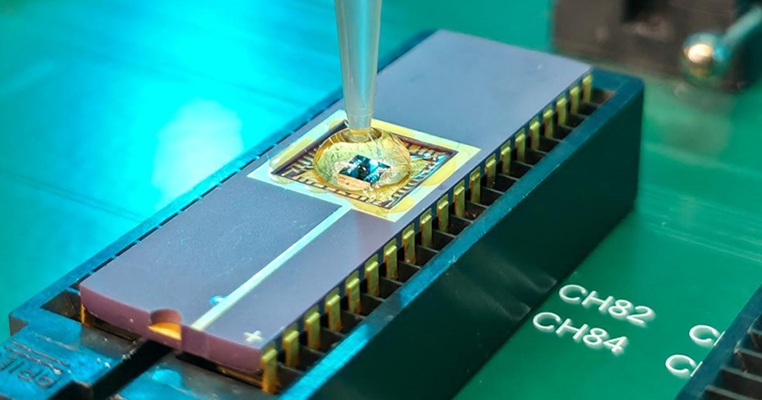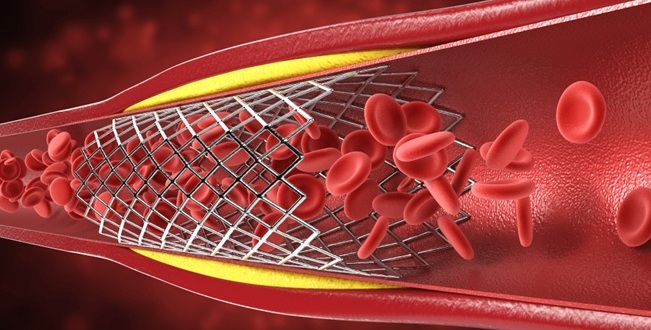Minimally Invasive Procedure Relieves Spinal Stenosis Symptoms
|
By HospiMedica International staff writers Posted on 11 Mar 2019 |
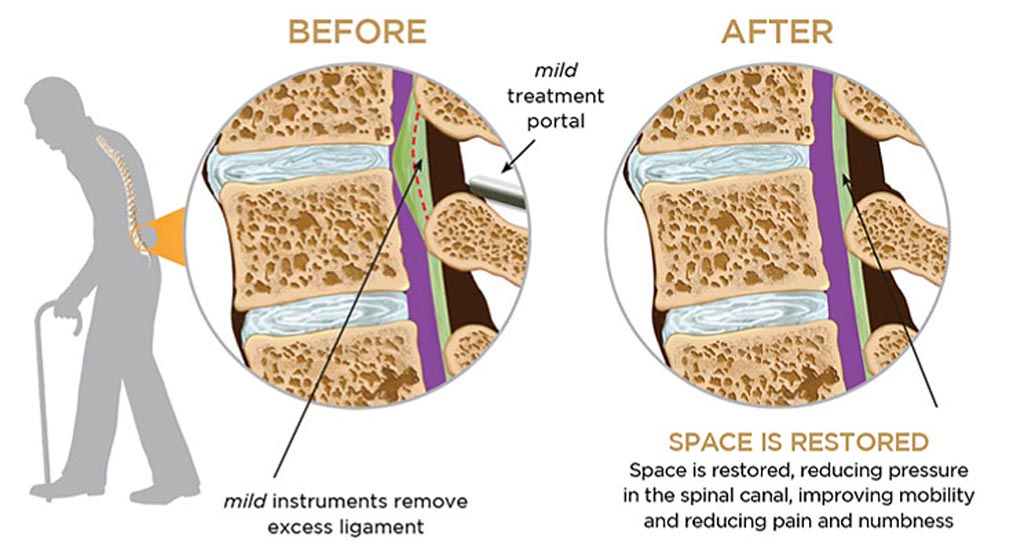
Image: In the spinal procedure, removing excess tissue in the lumbar spine relieves LSS (Photo courtesy of Vertos Medical).
The Vertos Medical (Aliso Viejo, CA, USA) mild device kit and procedure are designed to remove hypertrophic ligamentum flavum through a 5.1-mm treatment portal via a posterior approach using live fluoroscopy. Specialized instruments are then used to debulk the hypertrophic tissue while maintaining the integrity of the ventral fibers of the ligamentum flavum by staying posterior to the thecal sac. The restoration of space in the spinal canal reduces pressure on the nerve bundles, reduces pain, and improves mobility.
To maintain safety, an epidurogram is used to allow physicians constant visualization of the treatment area throughout the procedure. Another safety feature is the minimally invasive design of the procedure itself, which requires no general anesthesia, no implants, no stitches, and is performed in about one hour. Clinical research has demonstrated that around 80% of patients experience a significant reduction in pain and improvement in standing time and walking distance, even in the presence of other LSS causal factors.
“There are millions of patients currently suffering from the debilitating effects of lumbar spinal stenosis who are looking for new treatment options that are safe, effective, and treat the underlying cause of stenosis,” said Eric Wichems, President and CEO of Vertos Medical. "We are pleased that we are able to expand access to the mild procedure.”
“This is an excellent treatment for patients who formerly relied upon epidural steroid injections, physical therapy, and/or medications to relieve their pain,” said interventional physiatrist Lan Fotopoulos, MD, of Dickson Diveley Midwest Orthopaedic Clinic (Leawood, KS, USA). “In less than an hour, we can remove small pieces of bone and excess ligament using an imaging machine along with specialized tools through one tiny incision in the back. Once completed, space is restored to the spinal canal and compression is alleviated from the nerves. Think of this as something similar to removing a kink in a drinking straw or a garden hose.”
LSS is a degenerative, age-related narrowing of the lower spinal canal that causes compression of the nerve roots and subsequent neurogenic claudication symptoms in the lower back, legs, or buttocks that worsen with lumbar extension (standing or walking) but improve with lumbar flexion (sitting or bending forward). The narrowing is caused by degenerative changes in the lumbar spine and is often multi-factorial in nature, with common co-factors including disc bulge, osteophytes, and ligamentum flavum hypertrophy.
Related Links:
Vertos Medical
To maintain safety, an epidurogram is used to allow physicians constant visualization of the treatment area throughout the procedure. Another safety feature is the minimally invasive design of the procedure itself, which requires no general anesthesia, no implants, no stitches, and is performed in about one hour. Clinical research has demonstrated that around 80% of patients experience a significant reduction in pain and improvement in standing time and walking distance, even in the presence of other LSS causal factors.
“There are millions of patients currently suffering from the debilitating effects of lumbar spinal stenosis who are looking for new treatment options that are safe, effective, and treat the underlying cause of stenosis,” said Eric Wichems, President and CEO of Vertos Medical. "We are pleased that we are able to expand access to the mild procedure.”
“This is an excellent treatment for patients who formerly relied upon epidural steroid injections, physical therapy, and/or medications to relieve their pain,” said interventional physiatrist Lan Fotopoulos, MD, of Dickson Diveley Midwest Orthopaedic Clinic (Leawood, KS, USA). “In less than an hour, we can remove small pieces of bone and excess ligament using an imaging machine along with specialized tools through one tiny incision in the back. Once completed, space is restored to the spinal canal and compression is alleviated from the nerves. Think of this as something similar to removing a kink in a drinking straw or a garden hose.”
LSS is a degenerative, age-related narrowing of the lower spinal canal that causes compression of the nerve roots and subsequent neurogenic claudication symptoms in the lower back, legs, or buttocks that worsen with lumbar extension (standing or walking) but improve with lumbar flexion (sitting or bending forward). The narrowing is caused by degenerative changes in the lumbar spine and is often multi-factorial in nature, with common co-factors including disc bulge, osteophytes, and ligamentum flavum hypertrophy.
Related Links:
Vertos Medical
Latest Surgical Techniques News
- Ablation Reduces Stroke Risk Associated with Atrial Fibrillation
- Optical Tracking Method Identifies Target Areas in Robot-Assisted Neurosurgery
- General Anesthesia Improves Post-Surgery Outcomes for Acute Stroke Patients
- Drug-Coated Balloons Can Replace Stents Even in Larger Coronary Arteries
- Magnetic Kidney Stone Retrieval Device Outperforms Ureteroscopic Laser Lithotripsy
- Absorbable Skull Device Could Replace Traditional Metal Implants Used After Brain Surgery
- Magic Silicone Liquid Powered Robots Perform MIS in Narrow Cavities
- 'Lab-on-a-Scalpel' Provides Real-Time Surgical Insights for POC Diagnostics in OR
- Biodegradable Brain Implant Prevents Glioblastoma Recurrence
- Tiny 3D Printer Reconstructs Tissues During Vocal Cord Surgery
- Minimally Invasive Procedure for Aortic Valve Disease Has Similar Outcomes as Surgery
- Safer Hip Implant Design Prevents Early Femoral Fractures
- New Nanomaterial Improves Laser Lithotripsy for Removing Kidney Stones
- Ultraflexible Neurovascular Microcatheter Delivers Therapies to Tiniest Blood Vessels

- Magnetic Soft Robotic Valve Provides Minimally Invasive Intervention for Acid Reflux
- Wireless Metamaterial Spinal Implants Can Feel, Heal and Communicate
Channels
Critical Care
view channel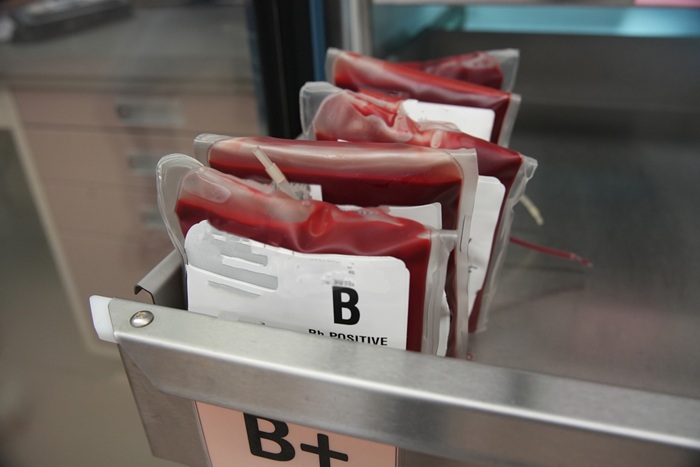
Earlier Blood Transfusion Could Reduce Heart Failure and Arrhythmia in Heart Disease Patients
Blood loss during or after surgery can place significant stress on people with heart disease, increasing the risk of dangerous complications. Transfusions are often delayed until hemoglobin levels fall... Read more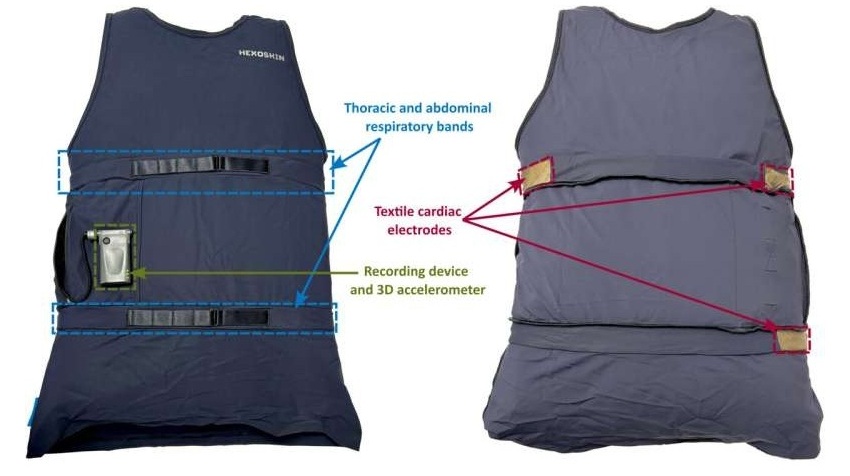
'Smart' Shirt Detects Epileptic Seizures in Real Time
Epilepsy affects roughly one in every 100 people worldwide, causing seizures that can range from subtle episodes to severe convulsions and loss of consciousness. These events arise from excessive electrical... Read morePatient Care
view channel
Revolutionary Automatic IV-Line Flushing Device to Enhance Infusion Care
More than 80% of in-hospital patients receive intravenous (IV) therapy. Every dose of IV medicine delivered in a small volume (<250 mL) infusion bag should be followed by subsequent flushing to ensure... Read more
VR Training Tool Combats Contamination of Portable Medical Equipment
Healthcare-associated infections (HAIs) impact one in every 31 patients, cause nearly 100,000 deaths each year, and cost USD 28.4 billion in direct medical expenses. Notably, up to 75% of these infections... Read more
Portable Biosensor Platform to Reduce Hospital-Acquired Infections
Approximately 4 million patients in the European Union acquire healthcare-associated infections (HAIs) or nosocomial infections each year, with around 37,000 deaths directly resulting from these infections,... Read moreFirst-Of-Its-Kind Portable Germicidal Light Technology Disinfects High-Touch Clinical Surfaces in Seconds
Reducing healthcare-acquired infections (HAIs) remains a pressing issue within global healthcare systems. In the United States alone, 1.7 million patients contract HAIs annually, leading to approximately... Read moreHealth IT
view channel
Printable Molecule-Selective Nanoparticles Enable Mass Production of Wearable Biosensors
The future of medicine is likely to focus on the personalization of healthcare—understanding exactly what an individual requires and delivering the appropriate combination of nutrients, metabolites, and... Read moreBusiness
view channel
Philips and Masimo Partner to Advance Patient Monitoring Measurement Technologies
Royal Philips (Amsterdam, Netherlands) and Masimo (Irvine, California, USA) have renewed their multi-year strategic collaboration, combining Philips’ expertise in patient monitoring with Masimo’s noninvasive... Read more
B. Braun Acquires Digital Microsurgery Company True Digital Surgery
The high-end microsurgery market in neurosurgery, spine, and ENT is undergoing a significant transformation. Traditional analog microscopes are giving way to digital exoscopes, which provide improved visualization,... Read more
CMEF 2025 to Promote Holistic and High-Quality Development of Medical and Health Industry
The 92nd China International Medical Equipment Fair (CMEF 2025) Autumn Exhibition is scheduled to be held from September 26 to 29 at the China Import and Export Fair Complex (Canton Fair Complex) in Guangzhou.... Read more










